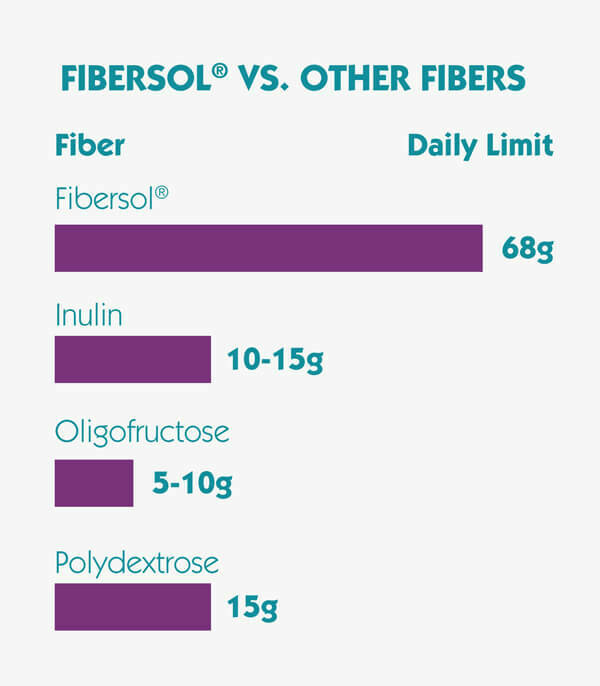The Fibersol® advantage
Because Fibersol® is well tolerated, formulators can use it to add even more fiber to food and beverage products. Brands can deliver the dietary fiber needed to fill consumers’ fiber gap, with little concern for digestive discomfort.
Backed by over 30 years of extensive clinical research, and proven well tolerated as high as 68 grams per day,* Fibersol® is well established to be better tolerated than fructooligosaccharides, inulin and certain sugar alcohols.
The daily recommended value (DRV) of fiber in the U.S. is 28g for a typical 2,000 calorie per day diet.
Well-tolerated Fibersol® makes it easier for consumers to take in the recommended amount of daily fiber, with minimal discomfort.
Digestive tolerance creates a world of opportunity
Proven, well-tolerated Fibersol® opens up opportunities for food, beverage and supplement manufacturers, by enabling claims in a range of categories, including:
- Digestive health
- Prebiotic dietary fiber
- Blood sugar and insulin levels
- Blood triglyceride levels
- Potential satiety benefits










